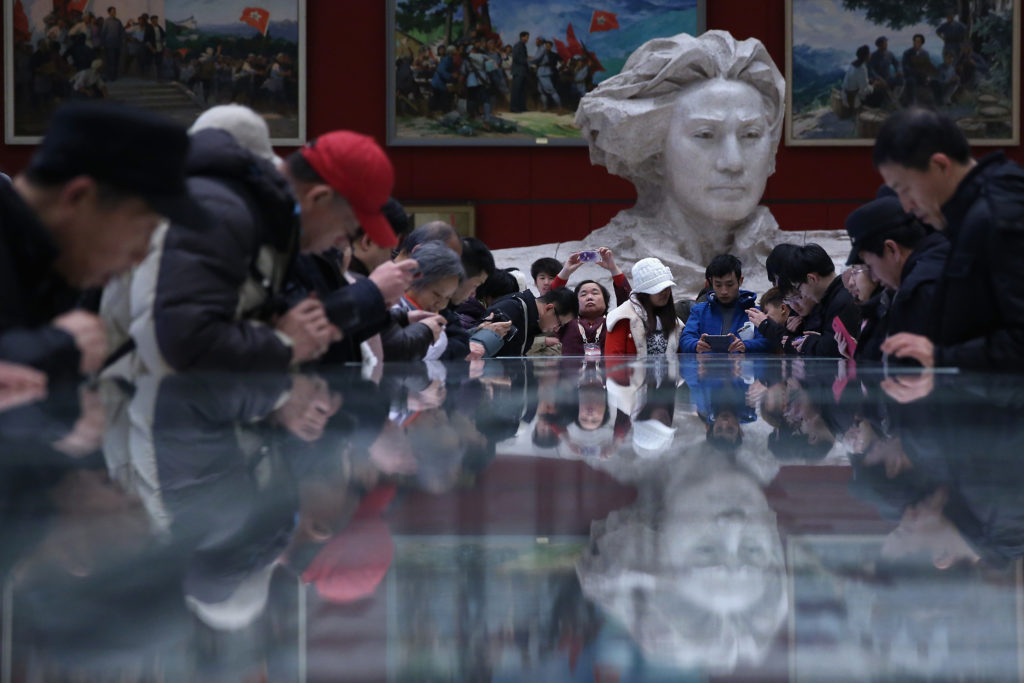Every Monday morning, artnet News brings you The Gray Market. The column decodes important stories from the previous week—and offers unparalleled insight into the inner workings of the art industry in the process.
This week, asking a big, uncomfortable question about a key market assumption…
EXIT STAGE LEFT
On Wednesday, news broke that Art Stage Singapore, the country’s largest contemporary art fair and the bedrock of Singapore Art Week, had called off its upcoming edition just seven days before its scheduled opening. According to my colleague Kate Brown, Art Stage Singapore president Lorenzo Rudolf offered no explanation for the late cancelation beyond “given circumstances,” and even fair director Marcus Teo said that day that he was still waiting to hear from the “head office” about the reasoning.
As of my writing, exhibitors have been left to sort through the wreckage with no alternatives provided by the fair and no word about refunds. Several have taken to a Facebook group called Art Stage SOS, which is a testament to both the heartening collaborative spirit in the local scene and, simultaneously, the absurdly dire straits in which the exhibitors find themselves. Just consider the kind but, well… limiting offer of temporary exhibition space from a gentleman whose office is “promoting the sustainable tiny house movement” in Singapore. (Perhaps-unnecessary caveat: “The space is not very big to be honest.”)
The question becomes how much of this is about one fair, and how much is about something bigger. In the past four years, exhibitors have abandoned Art Stage Singapore faster than a house where the faucets suddenly started shooting flames: 170 exhibitors in 2016, 130 in 2017, 84 last year, and just 35 this year. Every story about the fair’s spontaneous combustion also rightly resurrects the fact that, last November, Art Basel’s parent company, the MCH Group, decided to pull out of multiple regional fairs headlined by the new Art SG in Singapore and the India Art Fair.
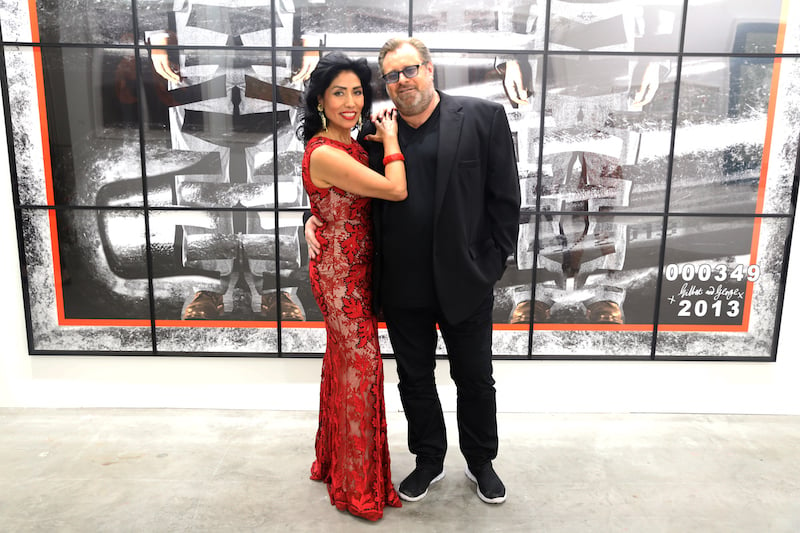
Art Stage Singapore and Jakarta founder Lorenzo Rudolf with his wife Maria Elena. Photo courtesy of Art Stage Singapore.
Now, some rumblings I’ve heard suggest there’s more to the Art Stage Singapore story than business as usual, and MCH’s retreat leaves behind more than just Asia. Magnus Renfrew, the man behind this week’s newly debuted modern and contemporary fair Taipei Dangdai, quickly stepped in to fill MCH’s void on Art SG, too, so the event will soldier on.
But then you swallow this little drop of poison in South China Morning Post’s piece about the cancelation of Art Stage Singapore…
Singapore, one of Asia’s wealthiest countries with world-class logistics and little restrictions on capital flow, has often fallen short of art fair organizers’ expectations as a market.
The Hong Kong-based Asia Contemporary Art Show pulled out in 2018 after demand proved insufficient to support its large-scale art fair. The Affordable Art Fair cut down its two editions a year to one last year.
…and the experience starts to get really queasy when you chase that bitter swig by chugging the broader economic and art-market news concerning the region’s true heavyweight.
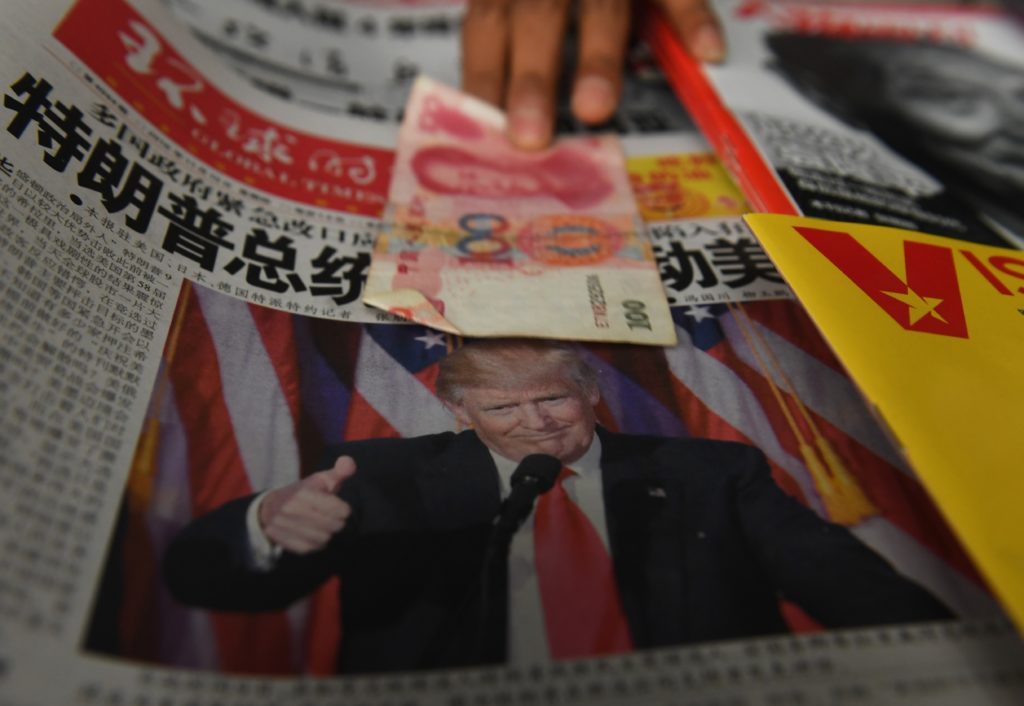
A vendor picks up a 100 yuan note at a news stand in Beijing. Photo: Greg Baker/AFP/Getty Images.
CHINA IN WINTER
First, the good news: As of Friday evening in New York, it appeared that China and the US were closing in on a deal to end the trade war that erupted between the two superpowers last year. Central to the optimism is a Chinese proposal to spend close to $1 trillion on American goods over the next six years, a heave of cash that would slam shut the trade deficit completely.
On the surface, that should relieve fears of a slowdown in China’s art trade. What’s good for the broader economy is almost always good for the art economy.
And yet, despite how often (and understandably) analysts cited the trade war as a primary cause for concern about the Chinese art market, mounting evidence suggests the real cause for concern lies elsewhere. According to the latest annual report by the China Association of Auctioneers (CAA), mainland China’s total yearly sales of art and antiques peaked all the way back in 2011, at over $9 billion. In 2017, the most recent year for which data is available, that figure only reached about $5 billion.
And as much as we Westerners tend to romanticize the Chinese private museum boom, especially when it comes to the ecstatic effect that filling thousands of gleaming new institutions could have on Western dealers’ fortunes, it may be wise to ease up on the throttle a bit.
Yes, the number of private and public Chinese museums exploded by 60 percent between 2009 and 2014. But the brigade of 4,164 that emerged when the smoke cleared still stood an order of magnitude below the US, which boasted 35,000 public and private museums in 2017, according to the US Institute of Museum and Library Services. Furthermore, I’ve heard from at least a couple of people who know the market well that many of China’s burgeoning “museums” are just glorified commercial exhibition spaces, not long-term gluttons for great work.
And none of this is even the worst news. Grab an air-sickness bag.
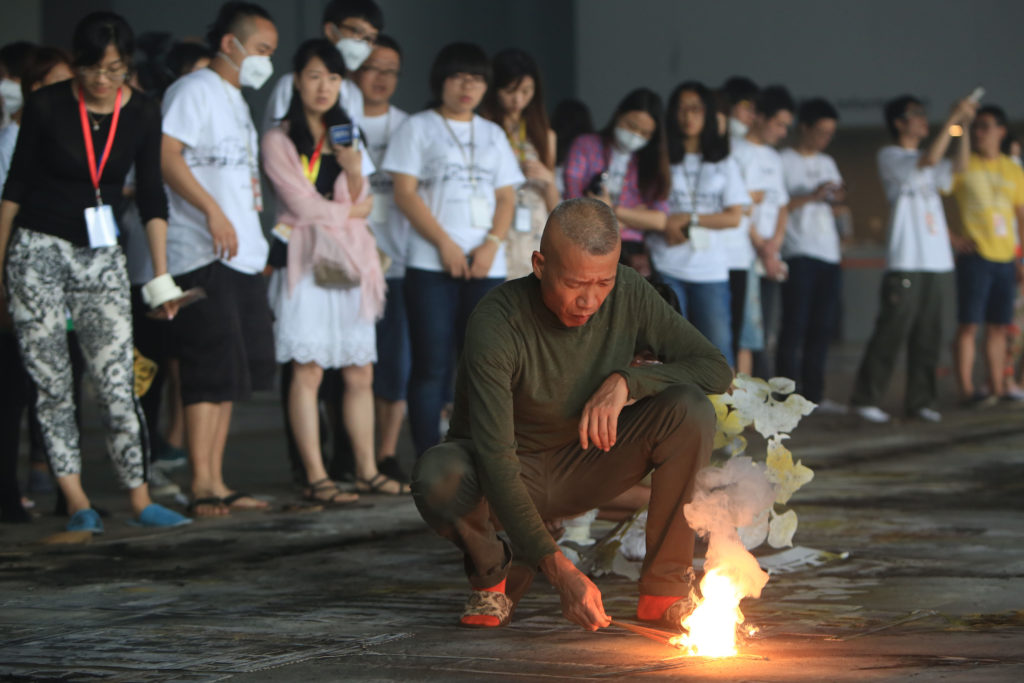
Chinese artist Cai Guo Qiang lights up for his new art work created by gunpowder at the Museum of Contemporary Art Shanghai on July 24, 2014 in Shanghai, China. Photo by VCG/VCG via Getty Images.
China’s GDP growth recently stumbled to its slowest pace since the Great Recession. Last year, a “financial de-risking campaign” helped plunge the country’s stock markets to their worst year-on-year results in 10 years. China International Capital Corporation, described as the “largest state-backed investment bank in China,” is projecting that a slate of strict real-estate controls will synthesize with larger economic uncertainties to make Chinese property sales decline for the first time since 2014.
So it’s not anticipation for the new season of Game of Thrones that recently provoked two of China’s most prominent entrepreneurs to start talking about a nightmarish winter. Here’s Casey Hall in the Business of Fashion last week:
Baidu CEO Li Yanhong… sent a New Year letter to employees that in part warned that China’s economic restructuring is “as cold and real as winter to every company,” in spite of Baidu’s positive performance in 2018…. This came only days after self-made billionaire Chen Hongtian, in a speech to the Harmony Club, an elite gathering of tycoons, warned that “winter will be very cold … it’s hard to predict and all that I can say is that difficulties [for private enterprises] are much bigger than people expected.”
This is not encouraging! In fact, I’d say it’s about as disheartening for the Asian art market as leaning in for a first kiss and being met with the phrase, “I think I’m just gonna call it a night.”
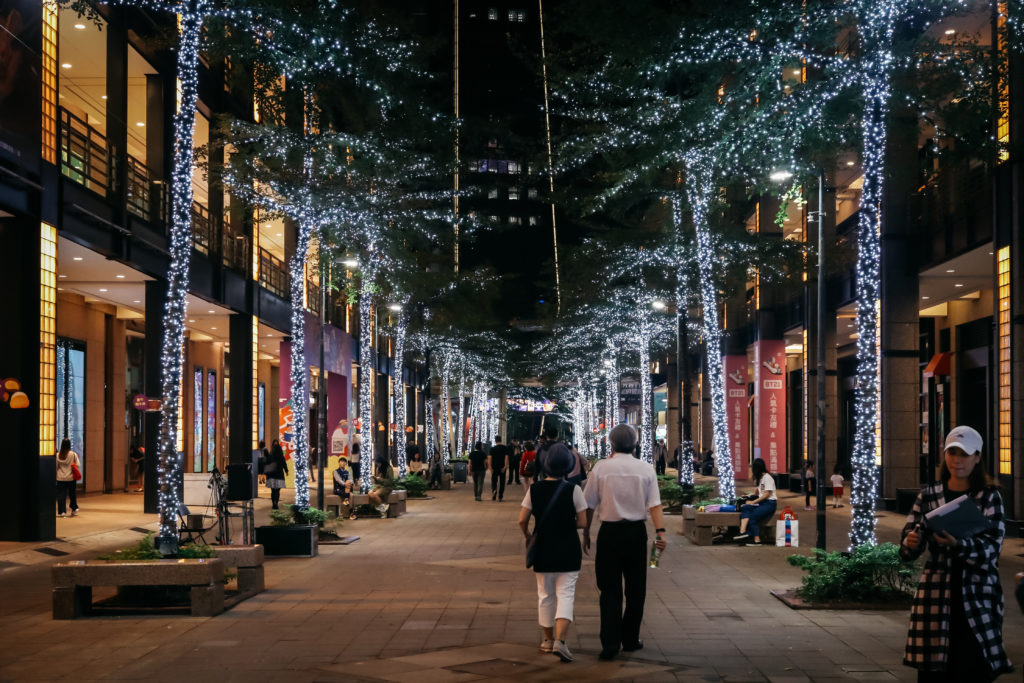
Taipei city scene, 2018. Courtesy Taipei Dangdai.
HOME-TURF ADVANTAGE
Economic frostbite aside, there’s another factor that may make it a good idea for Western dealers to downshift their expectations for a sales bonanza in the east. What if many, if not most, Asian collectors just straight-up prefer Asian artists and Asian sellers once Western price premiums are factored in?
As always, we should be careful about projecting that trends in typical retail will carry over to the art trade. But there are precedents for a home-turf advantage throughout Asia right now. Here’s Hall again:
Apple, for example, has seen intense competition in the Chinese marketplace from local smartphone makers who have innovated at a faster pace and offered similar quality products at a lower price point — Huawei last year overtook Apple as the world’s second largest smartphone vendor, and they, along with Xiaomi and Oppo, increased their market share in the third quarter.
In contrast, within the luxury fashion and beauty spheres, there is no domestic player to compete for market share with global giants such as LVMH and Gucci parent, Kering.
In other words, once the local or regional product is seen as being roughly on par with the Western one, the power of branding may not be enough to give the outsider an advantage. Which seems relevant in light of the fact that the exhibitor lists at some of the fairs I mentioned at the beginning of this piece are heavily weighted towards Asian galleries by design. Eighty-eight percent of Taipei Dangdai’s exhibitors hail from Asia, and 70 percent of the India Art Fair’s hail from India.
Similarly, Jasdeep Sandhu, owner of Gajah Gallery in Singapore and Jogjakarta, also had this subtle but telling bit of shade to throw after Art Stage Singapore’s demise:
This year’s Art Week will see the launch of SEA Focus, a home-grown art fair that is going to be more relaxed and enjoyable than the Art Basel-type of fairs, and I think that’s what people want.
Look, I’m not an Asian art-market expert. But despite the eastward bull-rush of blue-chip Western galleries, should this squall of negative indicators at least make us entertain the possibility that the most explosive growth in the vaunted Asian market might… already be over?
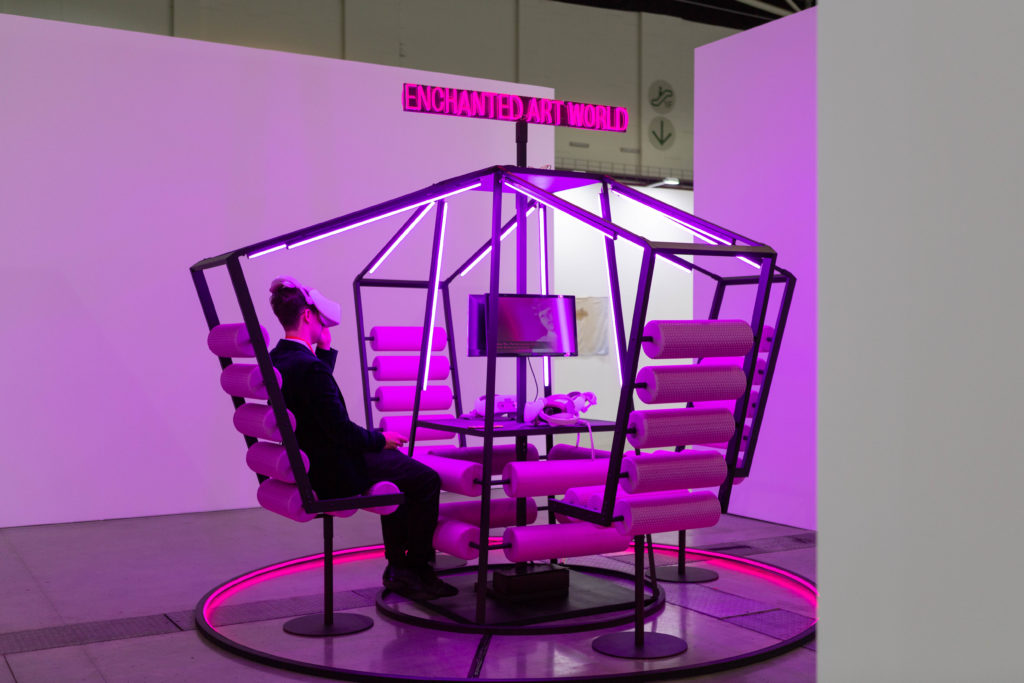
Installation view of de Sarthe Gallery in the Galleries Sector. Photo courtesy of Taipei Dangdai.
TEENAGE FANTASY
I’m not suggesting there are no new collectors to be reached in Asia. I’m just increasingly skeptical of the notion percolating through the Western art world that pivoting to Asia will be some life-changing bonanza. It reminds me a little of how, when I was about 17 years old, I used to think I’d magically mature out of all my anxieties and hang-ups once I reached adulthood.
Guess what? I’m still fucked up in all the same ways 19 years later! I’ve just learned how to cope with my issues a little better.
Maybe that is what western dealers should expect from expanding to Asia in 2019: a years-long process that, if they work really hard, might be able to make them modestly better off. But if that’s all, then it’s worth considering what they might be able to achieve by pumping the same amount of effort and resources into cultivating first-time buyers in markets closer to home.
What do I know, though? On some level, I’m still just a dumb teenager.
That’s all for this week. ‘Til next time, remember: The unknown is more exciting than the known, but that doesn’t necessarily mean it’s more valuable.
